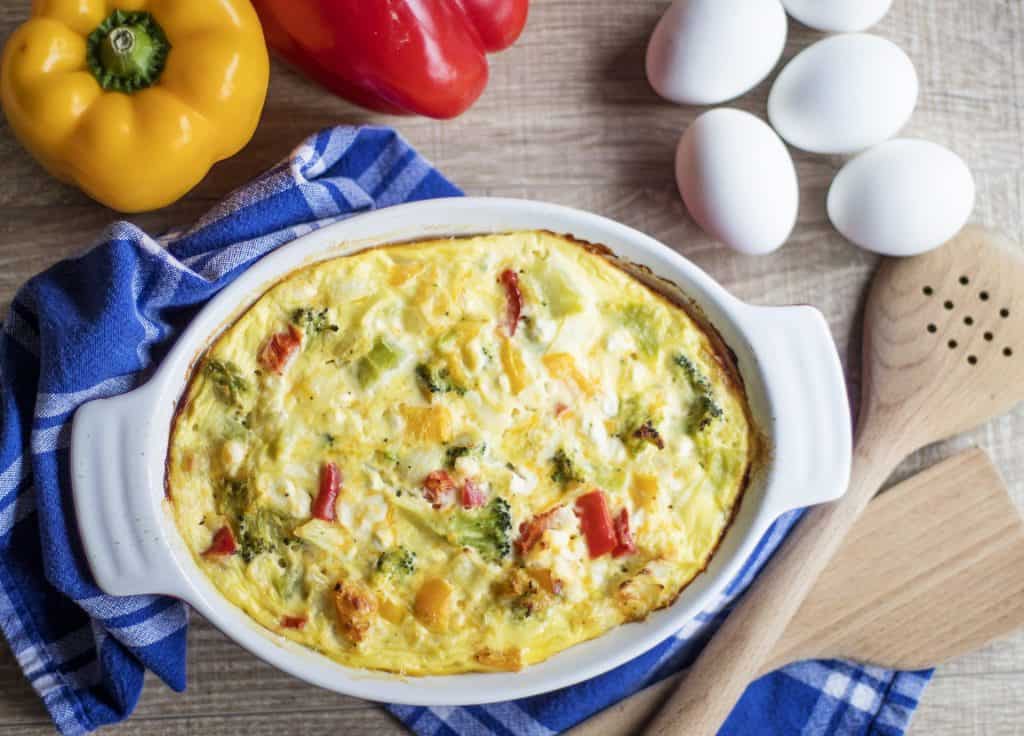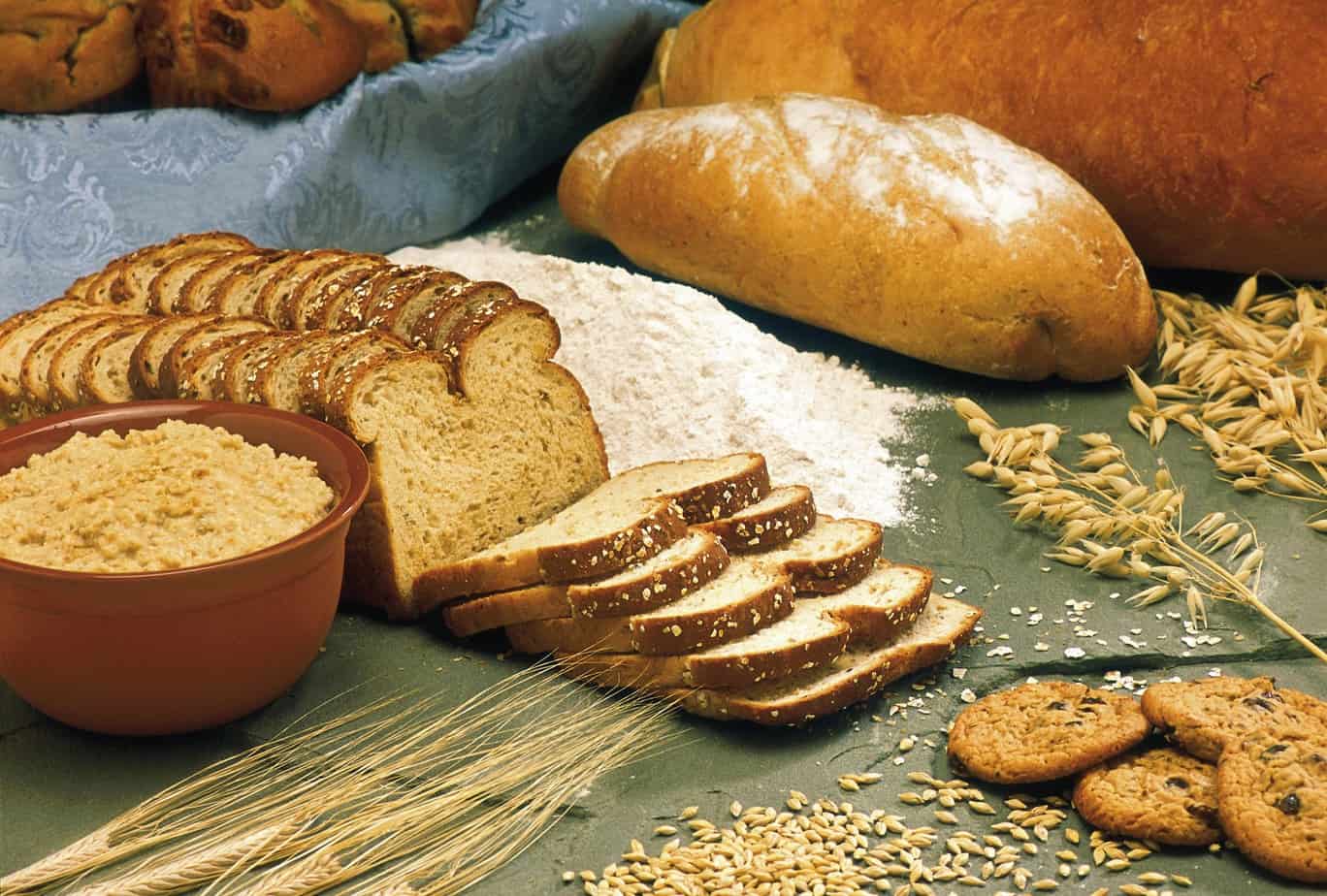My mother taught me a lot about food, including how to work with what you have on hand to make nutritious meals. She lived through many years when money was tight, and her creativity, coupled with a refusal to waste food, served her well for feeding a family of five. My mom’s how-to-make-do in the kitchen attitude has stuck with me, shaping how I cook, which, of course, includes ingredient substitutions!

Making quiche is a great way to use up vegetables, cheese, and eggs.
It’s easy and delicious to make ingredient swaps
When I came across an Ellie Krieger recipe in the Washington Post for Roasted Salmon with Artichoke Topping, I wanted to make it for dinner. Problem was, I only had half of the ingredients in the house, and I wasn’t going to the store at 6 PM to get the rest. So, channeling my mother’s flexibility with food, I changed Ellie’s recipe by:
• Using canned, drained artichoke hearts instead of the frozen kind.
• Whipping cottage cheese in the food processor to stand in for ricotta cheese.
• Swapping in half as much dried parsley for fresh.
• Using sundried tomato pesto instead of plain sundried tomatoes.
• Substituting regular salt instead for sea salt.
• Relying on minced, prepared garlic instead of fresh
The result? Scrumptious! It goes to show that the best recipes, like Ellie’s, will turn out just fine, even when tweaked quite a bit.

My version of Ellie Krieger’s Roasted Salmon with Artichoke Topping. Almost the same, but not quite.
You don’t always need a recipe to cook
Improvisation in the kitchen comes naturally to me, but I have to admit that I had doubts about messing with Ellie’s recipe because I was sure that she had worked hard to get it just right. However, as Jacques Pepin explains in this video, even if I had used the same ingredients, my results could have turned out differently than Ellie’s.
Pepin says a recipe is merely a point of departure, and that ingredients and preparation can, and must, change to fit each particular situation. As a recipe developer, that’s music to my ears. I want my recipes to “work” so badly for my readers that I get panicky about home cooks getting the same results as I do, but I guess I shouldn’t worry so much. Changing up ingredients offers the opportunity to make food that suits your tastes.
It seems as if my mother was on the same page as Pepin, in her everyday-cook sort of way. As a mom with a full-time job, she managed to have a home cooked dinner on the table for us every week night. I’m not sure she thought too hard about how a recipe would turn out; she seemed to know that her results would be OK, even with alterations. And that’s all that matters.

My mother taught me a lot about making do in the kitchen.
Common ingredient substitutions to make do in the kitchen
Being willing to improvise, and knowing how, helps you to be a better, more efficient food manager (which saves money), and helps you get food on the table without fussing. These days, it’s likely you are improvising more than ever.
Out of yeast? Try my yeast-free pizza dough recipe.

Use what you have on hand to make delicious, easy meals.
Coming up short on ingredients shouldn’t deter you from making most recipes, especially baked goods. Here are the ingredient substitutions I use to make do in the kitchen, which also include healthy swaps and vegan ingredient substitutions.
• Baking powder: Here’s what to use in place of baking powder, and these are equal to a 1 teaspoon substitution: ¼ teaspoon baking soda mixed with ½ teaspoon cream of tartar OR 1/2 cup plain yogurt plus 1 teaspoon baking soda and reduce the liquid in what you’re baking by 1/2 cup.
• Bread: Tortillas, crackers, tortilla chips, lettuce leaves, English muffins, bagel
• Brown sugar (1 cup): 1 cup granulated sugar mixed with 2 teaspoons molasses or dark corn syrup
• Butter: Use equal amounts of plain canned pumpkin; or make this butter to vegetable oil conversion by using ¾ as much vegetable oil, such as canola, as butter in the recipe.
• Buttermilk: (1 cup): Pour 1 tablespoon lemon juice or white vinegar in a cup measure and fill the rest of the cup with milk; or use 1 cup plain yogurt thinned out with 1 tablespoon milk.
• Cornstarch (1 tablespoon): 2 tablespoons all-purpose flour
• Chocolate (semi-sweet, 1 ounce): 1 ounce unsweetened chocolate mixed with 1 tablespoon sugar
• Chocolate (unsweetened, 1 ounce): 3 tablespoons unsweetened cocoa powder plus 1 tablespoon butter
• Cream (for a creamy soup): Puree cooked garbanzo beans, lentils, or any cooked legume and add to soup; or add mashed potatoes to soup for extra creaminess.
• Dates: Try this easy recipe for raisin paste.
• Egg (1): These work best in recipes that don’t require eggs as a leavener: ½ medium mashed banana; or ½ cup applesauce as a replacement or other pureed fruit, such as prunes; or 1 tablespoon ground flax seed or chia seeds mixed with 3 tablespoons warm water (allow to rest for at least 1 minute before using). See this post for other egg substitutes.
Learn how to use the fluid from canned garbanzo beans in place of eggs!
•Flour, all-purpose (for thickening soups and sauces only, 1 tablespoon): 1 ½ teaspoons cornstarch
• Flour (all-purpose, 1 cup): Use 1 cup rolled oats or 1 ½ cups oat flour. To make oat flour, place uncooked oats in a food processor and process into a fine, flour-like texture.
• Honey: Equal amount of maple syrup; or 1 ¼ cups granulated sugar plus ¼ cup water; or molasses; or agave syrup.
• Lemon juice substitutions: Try lime, orange, or grapefruit juice, or plain or flavored vinegars, depending on the recipe.
• Mayonnaise: Equal amount of mashed ripe avocado or hummus. Plain Greek yogurt is also a healthy substitute for mayonnaise.
• Meat or poultry: Beans, lentils, edamame, textured vegetable protein, tofu, or tempeh. Use an equal amount of chopped, sautéed mushrooms or cooked beans, to extend meat or poultry in dishes such as chili, burgers, lasagna, and pizza.
Read all about how to make less meat feed more people!
• Milk (1 cup): These milk substitutes can be used in baking: ½ cup evaporated milk plus ½ cup water; OR nonfat dry milk prepared according to package; OR an equal amount of plain yogurt or sour cream; OR 1 cup of water plus 1 ½ teaspoons melted butter.
• Nuts: Equal amount of dried fruit, such as raisins; or sunflower, chia, or hemp seeds.
• Pizza crust: Tortilla, English muffin, sandwich wrap, pita bread, Naan, bagel, deli flats.
• Riccotta cheese: Equal amount of pureed plain cottage cheese.
• Rice: Equal amount of farro, freekeh, barley, millet, quinoa, or oatmeal.
• Sour cream replacement in baking, dips, and side dishes: Equal amount of plain regular or plain Greek yogurt. Greek yogurt also makes a healthy substitute for mayonnaise.
• Sugar (granulated): ¾ cup honey for every cup of sugar in baked goods; mashed bananas, applesauce, and other fruit purees add natural sweetness to muffins, pancakes, and quick breads.
• Sugar (powdered): Place granulated sugar in a food processor and process until the sugar has a fine texture.
• Tomato sauce: Combine equal amounts of tomato paste and water.
• Chocolate hazelnut spread: Melt ½ cup dark chocolate chips in a microwavable bowl. Stir in 1 cup smooth peanut butter until well combined. Cool.
• Vegetable oil substitutes in baking: Use equal amounts of applesauce as a replacement, or plain canned pumpkin puree, or other pureed fruit; or 1¼ as much butter as called for in the recipe.
• Vinegar: Use equal amounts of lemon juice.
What are your favorite ingredient substitutions?

Like this:
Like Loading...

















